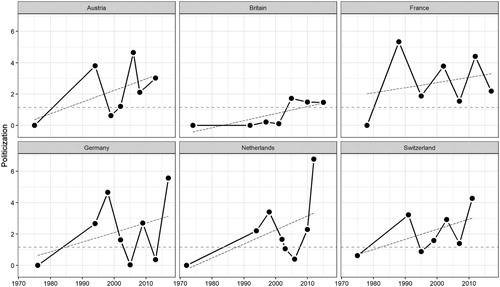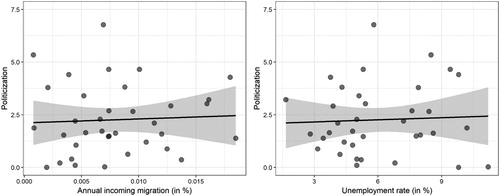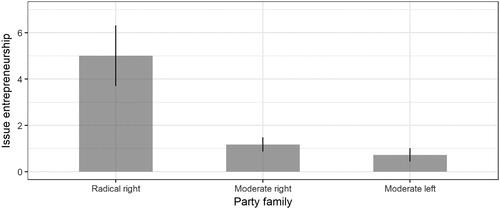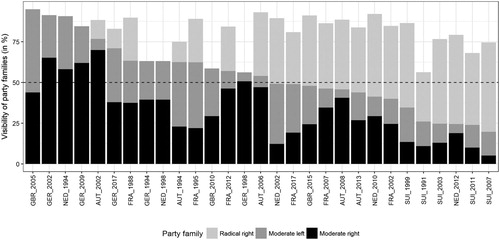Figures & data
Figure 1. The politicization of immigration in national elections per country over time.
Note: Graph shows the level of politicization of the immigration issue in national elections for each country over time in national election campaigns as covered by the media. The black dashed lines indicate the linear trend. The horizontal, grey dashed lines show the mean politicization calculated over all issues in our data and serves as a benchmark to distinguish between high and low levels of politicization.

Figure 2. Relationship between politicization and socio-economic factors.
Note: The left panel shows the level of politicization of immigration in relation to the annual share of incoming migrants as a percentage of the total population of a country. The right panel shows the relationship between the politicization of immigration and the unemployment rate in the country. Black lines show the linear fit, grey areas show the confidence interval.

Figure 3. Issue entrepreneurship on immigration issues by party family.
Note: Issue entrepreneurship is measured as the product of the salience a party puts on immigration issues and its positional deviance from the mean position in the party system based on party manifesto content. Bars indicate the mean values for each party family. Spikes represent the 95% confidence interval.

Table 1. Linear regression models of politicization of immigration issues in national elections.
Figure 4. Visibility of party families in politicized election debates on immigration.
Note: Stacked bars represent the relative visibility of a party family in relation to other party families in campaign debates on immigration issues as covered by the media. The dashed horizontal line allows identifying elections where moderate mainstream parties account for more than half of all coded observations. Only debates where the politicization of immigration is above our benchmark are reported. Bars are sorted by the joint visibility of mainstream parties.

